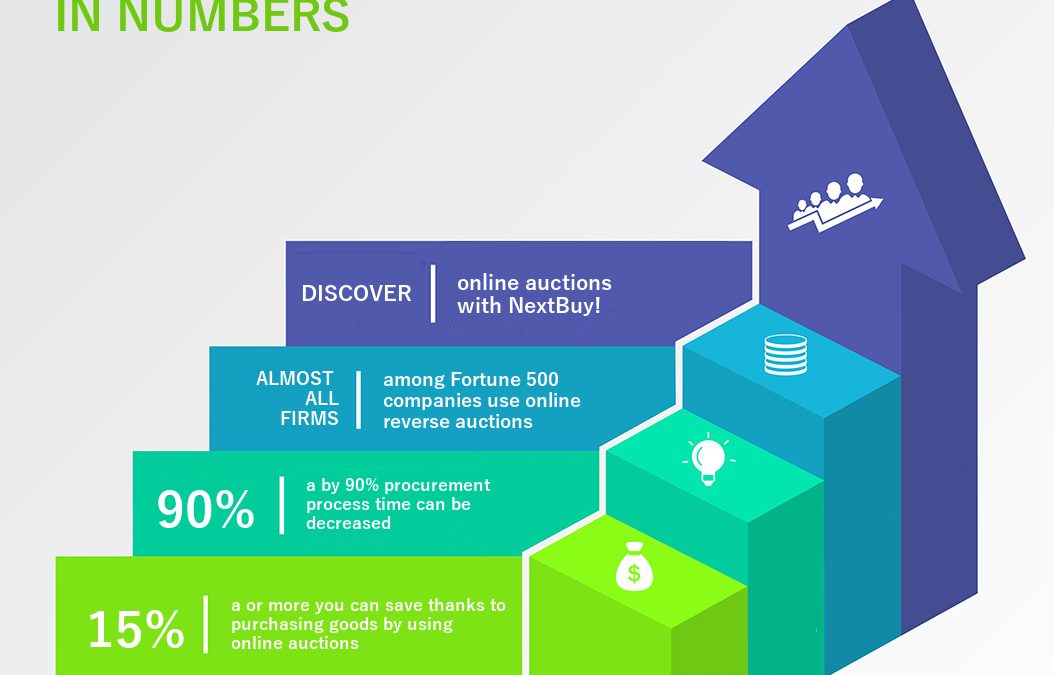Reverse auction or Reverse Dutch auction? What do we need them for? A couple of good practices from buyers for buyers.
How to use online auctions? A couple of good practices from buyers for buyers

5 reasons why millennials are perfect procurement candidates
30 November 2017
The Procurement Anti-Trends for 2018, so the procurement practices to avoid
4 January 2018Auction – everyone knows the term, but most likely as an online auction conducted on e-commerce platforms or any other tool or software. Who has ever negotiated the price on popular e-commerce websites, such as eBay, knows how effective the method is. The popularity of this form of negotiations is reflected in the number of the active users. In Q3 2017 eBay noted over 150 milion users worldwide. Does it mean that auctions are most efficient form of purchasing?
Who knows more about purchasing than buyers working in procurement departments for smaller and bigger companies? Analysts have noted that among Fortune 500 companies, almost all private sector firms use online reverse auctions.
A report from the University of Arkansas Institute has shown that by using reverse auctions, not only do companies save 15% on their purchasing of goods and services, but additionally, procurement process time can be decreased by 90%. Deloitte research shows that eSourcing area has received 25% of the whole investment in procurement digitalization in 2017.
Does it show online auction big potential? Definitely, yes.
Auctions may be perfectly used both in indirect and direct purchasing.
There are a couple of auction types, but in B2B purchasing most popular are: a reverse auction and reverse Dutch auction. Each of them requires different parameters which are essential to set up an effective procurement proceeding.
A reverse auction is one of the most often used auctions. The suppliers invited to participate in the auction gradually decrease their prices for the goods and services. Eventually, a buyer gets the lowest price for the service meeting buyer’s requirements.
What are the good practices of a reverse auction which streamline the process, and most importantly, help negotiate best price for best quality?
- Before the auction launch, we recommend to send a regular RFx to the suppliers we want to invite. The goal is to do a little research on the market and include only the suppliers who meet basic requirements.
- The auction basic time is approximately 20 minutes. It’s absolutely enough to get to know the auction details, and so short that it generates an effect of competitiveness.
- It’s important to set up a bid increment – usually it’s 0.25% up to 0.5% of a current bid. Thanks to that the auction does not last too long and it’s effective.
- A reverse auction may be used while buying all types of goods and services, but it’s most useful when purchasing popular products (according to the Kraljic Matrix that would be “leverage” and “non-critical” group of products – the article on Kraljic Matrix coming soon). In these cases, the relation with a supplier or a producer does not really matter to us. The reverse auction will be also useful when there is no high spread.
Reverse Dutch auction – the buyer raises the price from a low starting point until a supplier agrees to sell at the stated price. The price is bid up according to the parameters (for example, every 30 seconds for 1000 USD). The first bid accepted by a buyer wins the auction.
Any good advice?
- Same as for a reverse auction, it’s good to do research on the market before we start the auction and invite only the representatives who meet the basic requirements.
- Basing on the market knowledge, we set up a time interval after which the price increases (such 30 seconds and 1000 USD)
- Reverse Dutch auction is really useful while purchasing goods or services with a high spread and limited number of suppliers.
Having well defined auction parameters and choosing a proper auction type, a purchasing process may last less than one hour and all KPIs may be performed. When choosing an e-procurement software with which we are going to organize auctions, it’s good to pay attention whether it supports a various types of auctions and offers parameter defining option as well as supplier activity tracking option.
Good luck!
P.S. NextBuy supports both reverse and reverse Dutch auctions.

